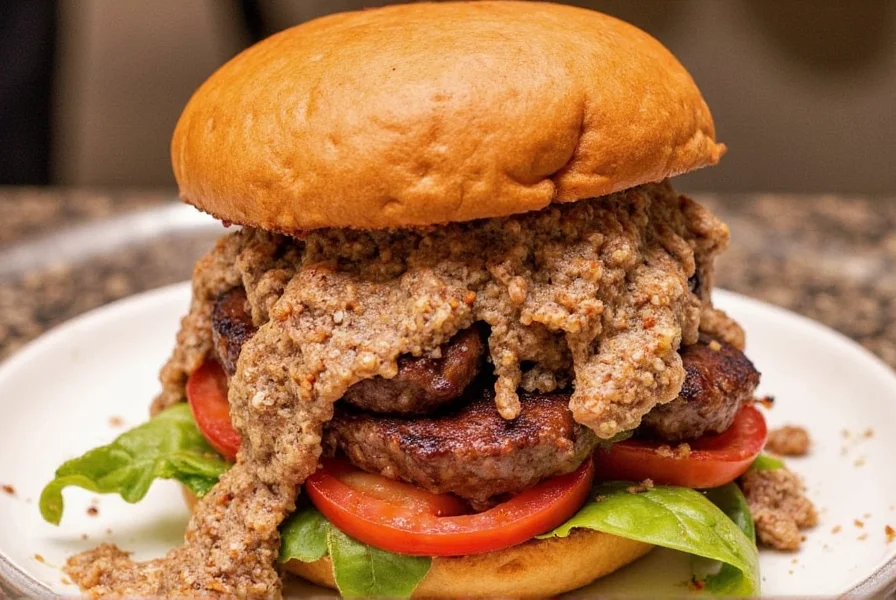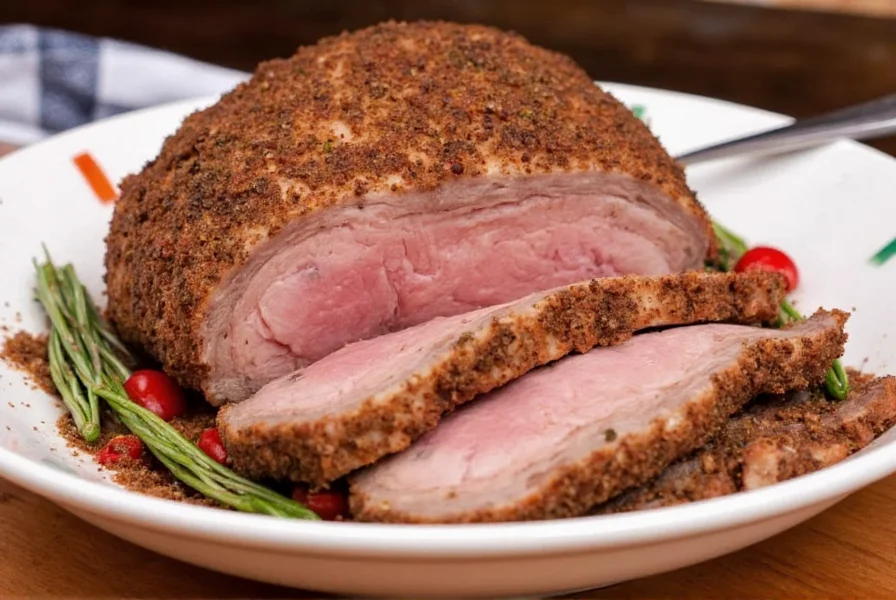Table of Contents
- Introduction to Pork Roast Seasonings
- Practical Tips for Seasoning a Perfect Pork Roast
- Understanding Spice Combinations for Pork Roast
- Creating Your Own Seasoning Blends at Home
- Comparison of Seasoning Blend Types
- Frequently Asked Questions About Pork Roast Seasonings
- Conclusion: Master Your Next Pork Roast
Introduction to Pork Roast Seasonings
Perfectly seasoned pork roast transforms an ordinary meal into something extraordinary. The key to exceptional flavor lies in understanding spice interactions, proper application techniques, and creating balanced blends. This guide provides actionable steps to master pork roast seasoning from scratch, with science-backed techniques and customizable recipes.
Practical Tips for Seasoning a Perfect Pork Roast
Follow these evidence-based techniques for maximum flavor penetration and texture:
- Apply salt 12-24 hours before cooking: Salt draws out moisture, then reabsorbs it with seasoning for deeper penetration. Use 1 teaspoon kosher salt per pound of meat.
- Use dry rubs for crust formation: Mix spices with 1-2 teaspoons oil per pound to create an adhesive coating that forms a flavorful crust during cooking.
- Balance sweet and savory components: Maintain a 3:1 savory-to-sweet ratio (e.g., 3 parts paprika/garlic powder to 1 part brown sugar) for optimal flavor complexity.
- Layer spices strategically: Apply coarse spices first (like cumin or mustard powder), then finer spices (like paprika) for even distribution.
- Rest meat after cooking: Allow 15-20 minutes resting time before carving to redistribute juices and enhance tenderness.

Understanding Spice Combinations for Pork Roast
Spice chemistry determines how flavors interact. Here's how key ingredients function in pork seasoning:
| Spice | Flavor Profile | Chemical Function | Best Pairings |
|---|---|---|---|
| Paprika | Smoky, sweet | Carotenoids enhance color and mild sweetness | Brown sugar, cumin, garlic |
| Garlic Powder | Pungent, savory | Allicin compounds create depth and umami | Thyme, rosemary, black pepper |
| Oregano | Earthiness, herbal | Terpenes provide aromatic complexity | Cumin, lime, chili powder |
| Cumin | Warm, nutty | Carvone and limonene create distinctive aroma | Chili powder, coriander, smoked paprika |
| Sage | Woodsy, slightly bitter | Thujone compounds balance richness | Apple cider vinegar, thyme, brown sugar |
Understanding these chemical interactions helps you create balanced blends rather than simply mixing random spices.
Creating Your Own Seasoning Blends at Home
Homemade blends outperform store-bought options in freshness and customization. Here are three professional-grade recipes:
Classic BBQ Rub
- 2 tablespoons smoked paprika
- 1 tablespoon brown sugar
- 1 tablespoon garlic powder
- 1 tablespoon onion powder
- 1 teaspoon black pepper
- 1 teaspoon mustard powder
- 1/2 teaspoon cayenne (optional)
Best for: Slow-cooked or smoked pork shoulders. The sugar caramelizes for a perfect bark, while mustard powder enhances spice adherence.
Herb & Citrus Blend
- 2 tablespoons dried rosemary
- 1 tablespoon dried thyme
- 1 tablespoon lemon zest
- 1 tablespoon garlic powder
- 1 teaspoon sea salt
- 1/2 teaspoon ground coriander
Best for: Lean pork loins or tenderloins. Citrus brightens the meat's natural sweetness without overpowering it.
Spicy Mexican Rub
- 2 tablespoons chili powder
- 1 tablespoon cumin
- 1 tablespoon smoked paprika
- 1 teaspoon oregano
- 1 teaspoon garlic powder
- 1/2 teaspoon chipotle powder
Best for: Pork carnitas or roasted shoulders. The chipotle adds smoky heat that complements the meat's fat content.

Comparison of Seasoning Blend Types
Choosing the right blend depends on your cooking method and desired flavor profile. Here's how different styles perform:
| Blend Type | Best Cooking Method | Flavor Profile | Meat Cuts Best Suited | Key Ingredient Ratio |
|---|---|---|---|---|
| Classic BBQ | Smoking or slow roasting | Smoky-sweet with savory depth | Pork shoulder, ribs | 3:1 paprika to sugar |
| Herb & Citrus | Oven roasting | Bright, aromatic, clean | Pork loin, tenderloin | 2:1 herbs to citrus |
| Spicy Mexican | High-heat roasting | Smoky, spicy, complex | Pork shoulder, carnitas | 2:1 chili powder to cumin |

Frequently Asked Questions About Pork Roast Seasonings
What's the science behind salt penetration in pork roast?
Salt draws moisture from the meat's surface through osmosis, then reabsorbs it with seasoning dissolved in the liquid. This creates deeper flavor penetration than surface-only seasoning. For best results, apply salt 12-24 hours before cooking at 1 teaspoon per pound of meat.
Why do some seasonings burn during cooking?
Sugars and fine powders (like paprika) burn at high temperatures. To prevent this: 1) Use coarse sugar crystals 2) Apply sugar-based rubs only during the last 30 minutes of cooking 3) Maintain cooking temperatures below 350°F (175°C) for sugar-heavy blends.
How do I adjust seasonings for different pork cuts?
Lean cuts (loin/tenderloin) need lighter seasoning with acid (citrus/vinegar) to balance dryness. Fatty cuts (shoulder/butt) can handle bolder spices like cumin and chili powder. Always use less salt on lean cuts since they absorb less moisture.
Can I use fresh herbs instead of dried?
Yes, but use 3x the amount of fresh herbs (e.g., 1 tablespoon dried = 3 tablespoons fresh). Add fresh herbs during the last 30 minutes of cooking to preserve their delicate flavors. For dry rubs, dried herbs are preferable as they adhere better to meat surfaces.
What's the best way to apply oil to seasoned pork?
Apply neutral oil (canola, avocado) first using a pastry brush, then sprinkle seasoning. This creates an adhesive layer that prevents spices from falling off during cooking. Use 1 teaspoon oil per pound of meat - too much oil causes steaming instead of browning.
How do I fix an over-seasoned pork roast?
For salt overload: Serve with acidic sides (tomato-based sauces, citrus salad) to balance saltiness. For spice overload: Add creamy elements like sour cream or avocado. For burnt spices: Trim the outer crust before serving. Prevention is best - always taste your rub before applying.
Conclusion: Master Your Next Pork Roast
Seasoning pork roast isn't about following recipes blindly - it's understanding how spices interact with meat chemistry. By applying salt early for penetration, balancing sweet and savory elements, and choosing blends suited to your cooking method, you'll consistently achieve restaurant-quality results.
Remember: The best seasoning is one you customize to your taste. Start with these foundational ratios, then experiment with adding unique ingredients like coffee grounds for depth or orange zest for brightness. Happy cooking!










 浙公网安备
33010002000092号
浙公网安备
33010002000092号 浙B2-20120091-4
浙B2-20120091-4